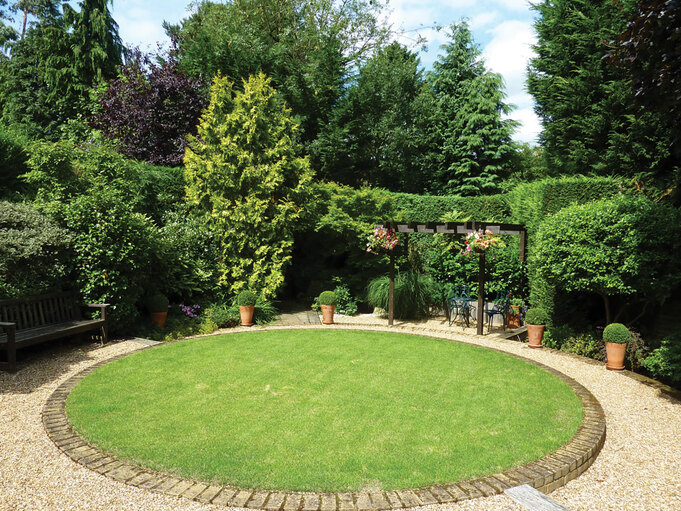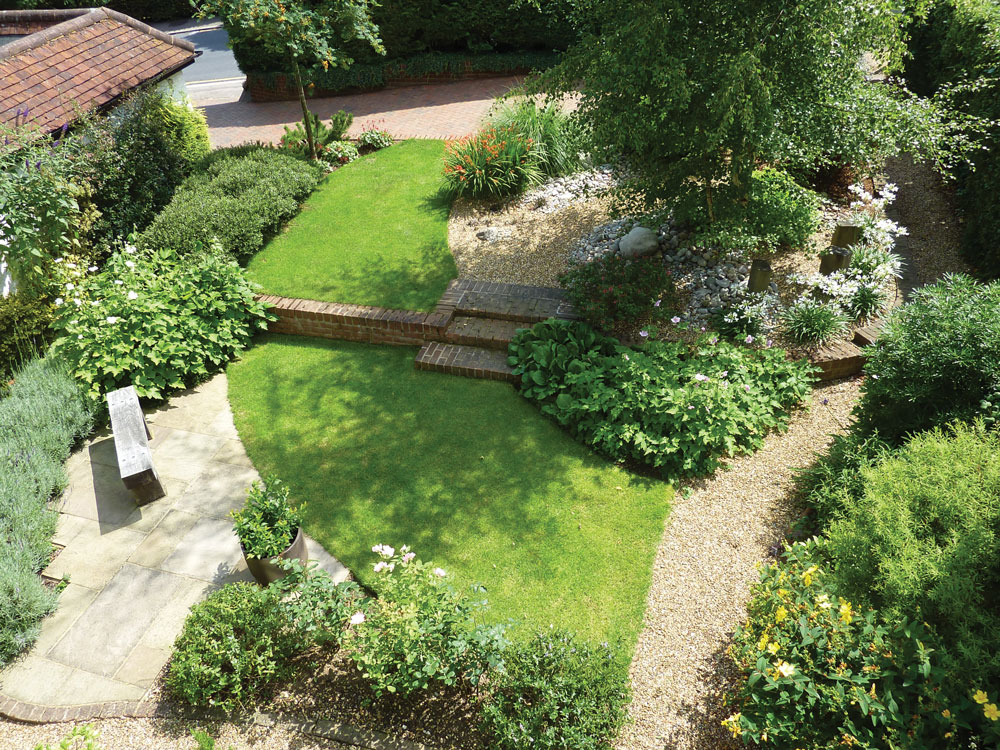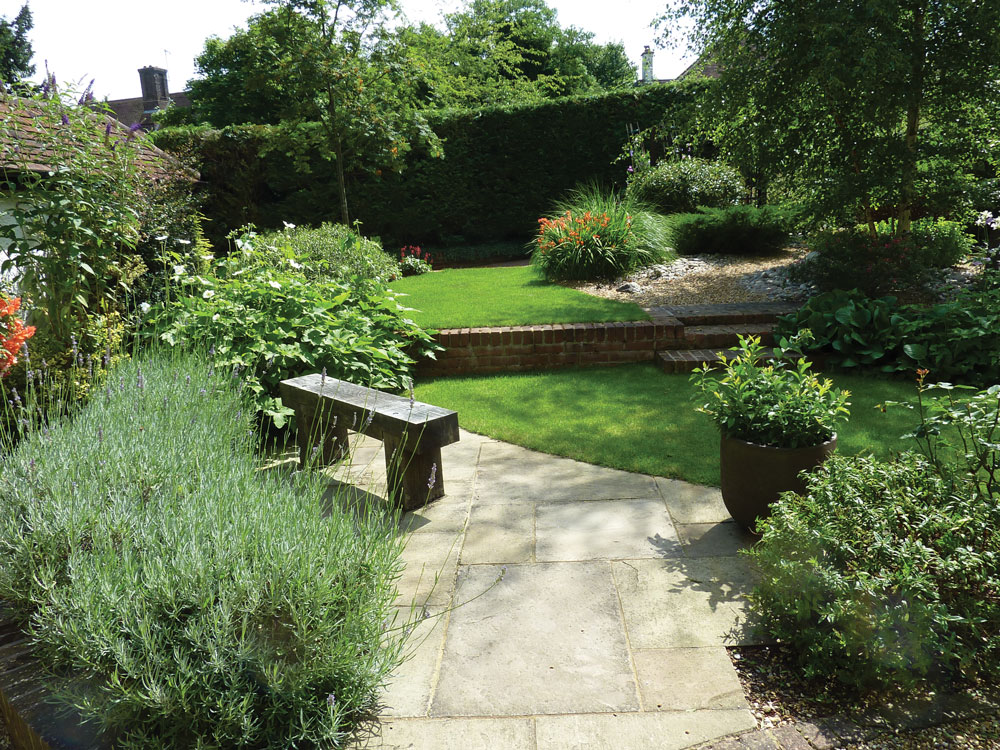|
Some of you may have visited our garden in Christchurch Crescent in 2012 as part of the Jubilee Garden Walkabout. This is its story.
When we moved in, our small back garden (roughly 15m wide by 20m long) was full of plum tree suckers and ground elder. We gradually cleared it, created a wavy border on two sides of a more or less rectangular lawn and planted various shrubs, aiming to create the effect of a walled garden. We were new to gardening, there was constant weeding to be done and, as the garden faces NW, many of the shrubs strained to reach out towards the sun. Plants grew at funny, twisted angles and we had to make the borders wider and wider each year to try to accommodate this problem. Thirsty trees in neighbouring gardens and a huge ash tree in the centre of our lawn meant that nothing really thrived, despite our best attempts. In the summer of 2007 we added a conservatory and larger patio to the back of the house and by the time the work was finished, the garden was a real mess. Enter our friend Lorraine! I had first encountered her when she was hidden in the middle of a large shrub she was pruning for a friend - we had always admired her creativity in that garden. “Are you interested in helping us create a new garden?” I tentatively enquired..... So, ‘The Project’ begain in Spring 2008. Our chief requirements were for a low-maintenance garden, colour and interest throughout the year, plants to attract birds and insects and different seating areas to make the best use of sun and shade at different times in the day. The first thing that went was the old ash tree – there really is no place for such a huge tree in a small garden – and immediately plants in that area started to grow more abundantly, delighted that they had more light and moisture. Healthy plants were retained, and some moved to areas where they had a better chance of thriving. Easy-maintenance plants such as buddleias, philadelphus, fuchsias, pieris, heucheras, weigelias and skimmias were planted. The main design challenge was the fact that the garden has quite a steep downward slope. This was cleverly managed by several subtle changes of level. The patio steps down to a gravel path and lawn. Another drop leads to a further gravel path and a row of wooden sleepers behind a pergola conceals a further step at the bottom of the garden. Breaking up the gravel are several groups of pebbles and large boulders heaped in corners to add visual interest. |
The other challenge was to make the relatively small space feel bigger. This was done by creating a circular, central lawn, surrounded by a formal path to emphasize the width of the space (previously obscured by the deep borders).
There are several focal points, particularly the pergola, an old bench and an urn filled with brightly coloured plants depending on the season. To create an air of contemporary formality, there are nine box balls in Long Tom pots around the circular path. The garden indeed did appear to double in size once the hard landscaping and planting were completed. Friends and visitors comment on how restful the garden is. Birds and insects seem to like it and Mike and I love it. The next year we asked Lorraine to design a new front garden, based around the existing walls and paths. Our requirements were similar to those of the back, with the addition of scented shrubs near the house. Again, there were trees that were far too large: a big blue cedar and a false acacia. This meant that the existing lawn was always parched and the only plants that thrived were vincas and euphorbias. To replace the large trees, a rowan and a silver birch were planted. As with the back garden, there was a big difference in levels. A feature was made of this – we now have two distinct gardens with steps leading between them. The lower one has a small lawn, rose bushes, lavenders, Japanese anemones and a paved area with a rustic, wooden bench. The upper one echoes the back garden with swathes of gravel, large pebbles and boulders, softened by a horizontal conifer and ornamental grasses. Colour is provided in the spring by dozens of crocus and clumps of narcissi set into the gravel, crocosmia and heuchera in summer and sedums in autumn. Another pergola was added - again echoing the one in the back garden - with yellow roses, wisteria and honeysuckle. The remaining beds have well-established shrubs with lilac, lavender, choisya, and daphne mezereum planted along the path, which give off wonderful scents as the seasons change. We are delighted that our front and back gardens now serve as the welcoming ‘outdoor rooms’ that we had always hoped for. Liz Bissett 2013 |



